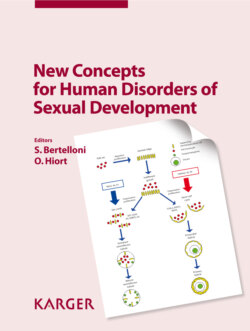Читать книгу New Concepts for Human Disorders of Sexual Development - Группа авторов - Страница 13
На сайте Литреса книга снята с продажи.
Data Flow and Security
ОглавлениеFigure 2 summarises how information flows in the European DSD registry as well as the security checks that are supported. Audit tracking software monitors access patterns, machine locations and user access more generally. With this information, it is possible to accurately track and identify both legitimate and any potential illegal access attempts - this is achieved in part through tools provided by Google Analytics. The VRE and registry are themselves hosted in a portal that is protected through a targeted Shibboleth Identity Provider (IdP) at the NeSC. In addition to supporting Single Sign-On (SSO) authentication, the IdP also provides digitally signed attribute certificates which are subsequently used to restrict access to and use of data resources available through the portal itself. Assignment of these privileges is made as part of the panel evaluation. Current roles supported include for local contributors only, for EuroDSD contributors, for EuroDSD investigators and for EuroDSD research collaborators. A user not in possession of any of these roles will not be able to access any data resources within the portal.
Fig. 2. Data flow within the European DSD registry. EEA = European Economic Area; IBAC = Identity Based Access Control; RBAC = Role Based Access Control.
Fig. 3. Distribution of cases according to country (February 2010).
The registry itself does not include any identifying information on patients directly. Instead, every participant on the registry is assigned a unique identifier generated automatically following entry of a case into the registry. This identifier needs to be kept and associated with local records at the contributing partner site. A record in the registry may also have a local identifier which is kept by the clinical partner, physically and electronically, separately to the registry. The unique identifier contains no identifying information within it. This unique identifier is used to track all information about the participant in the registry. The only way for research partners to find out more about the participants in the registry is to contact the clinical partners whose details shall be linked to the unique identifier. The complete research staff at the NeSC maintains up-to-date training in protection of data on human subjects as detailed at https://tethys.nesc.gla.ac.uk/.
Table 1. Distribution of 548 cases in the European DSD registry by disorder and actual diagnosis
| Diagnosis | n |
| Disorder of gonadal development | 137 |
| Partial gonadal dysgenesis | 71 |
| Complete gonadal dysgenesis | 50 |
| Testicular DSD | 6 |
| Ovotesticular DSD | 5 |
| Gonadal regression | 3 |
| Other | 2 |
| Disorder of androgen synthesis | 70 |
| 17β-HSD deficiency (HSD17B3) | 26 |
| P450 oxidoreductase deficiency (POR) | 21 |
| 5a reductase deficiency (SRD5A2) | 15 |
| Combined 17a-hydroxylase/17,20 lyase deficiency | 2 |
| Isolated 17,20 lyase deficiency | 1 |
| P45O scc deficiency (CYP11A1) | 1 |
| Other | 4 |
| Disorder of androgen excess | 89 |
| 21a hydroxylase deficiency (CYP21A) | 87 |
| 11β hydroxylase deficiency (CYP11B1) | 1 |
| Other | 1 |
| Disorder of androgen action | 186 |
| Complete androgen insensitivity syndrome | 144 |
| Partial androgen insensitivity syndrome | 40 |
| Other | 2 |
| Nonspecific disorder of undermasculinisation | 37 |
| Complex anomalies | 11 |
| EMS of less than 5 | 5 |
| EMS of greater than 8 | 2 |
| EMS between 5 and 8 | 2 |
| Isolated bilateral cryptorchidism | 1 |
| Isolated hypospadias | 16 |
| Leydig cell defects | 4 |
| Persistent Mullerian Duct Syndrome | 2 |
| Cloacal anomaly | 1 |
| Defects of mullerian development | 4 |
| Mayer-Rokitansky-Kuster-Hauser Syndrome | 2 |
| Mullerian duct aplasia, renal agenesis/ectopia cervical somite dysplasia (MURCS) | 1 |
| Other | 1 |
| Other | 18 |
